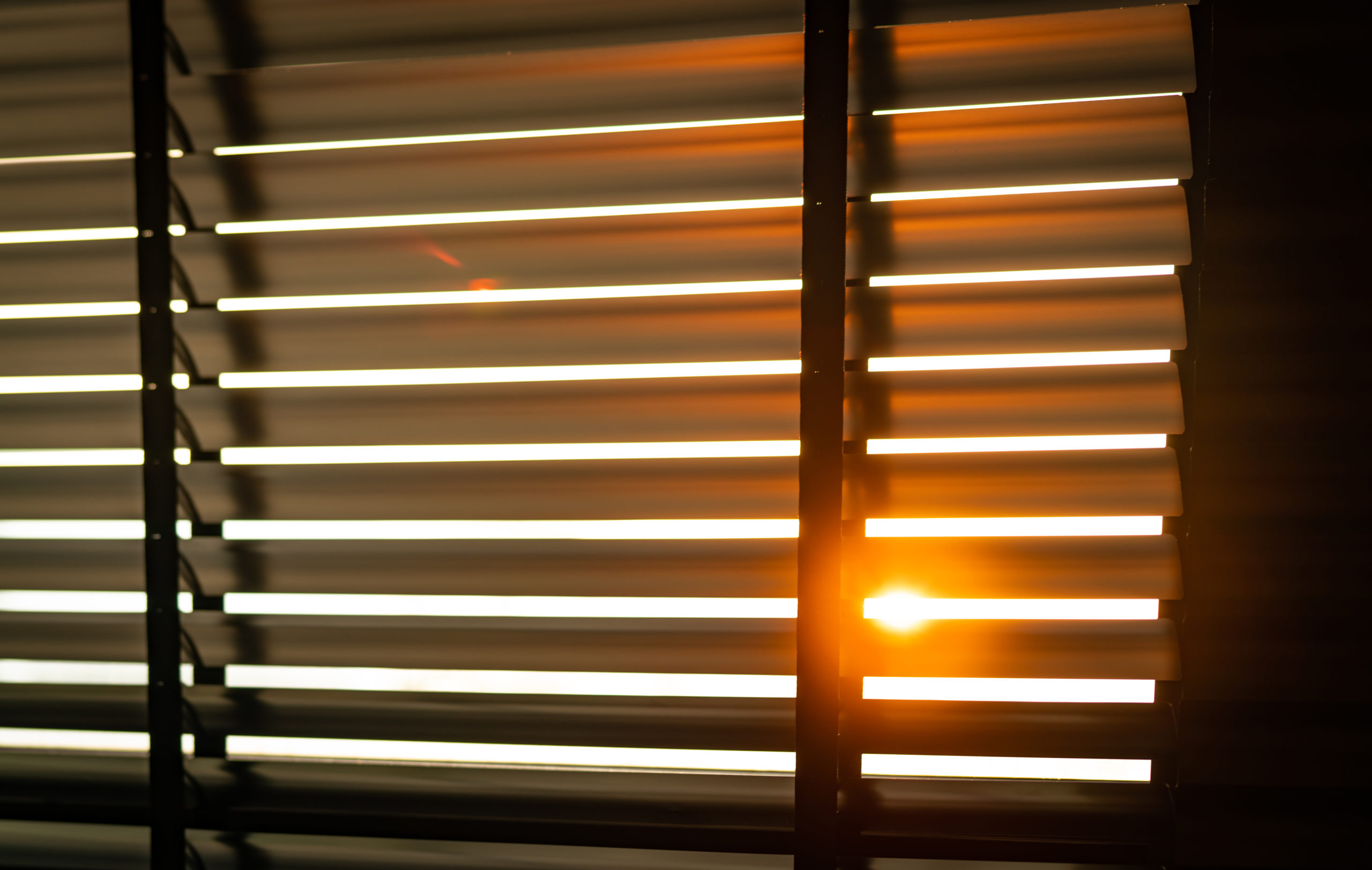Community Resources: 10 Tips to Save Energy at Home in Winter

This blog is part of a series from Elevate’s Community Resources team to make climate topics easy to understand and implement in your community!
Winter brings the festive holiday season and crisp cool air, but the snowy season can also bring a spike in our electricity and gas bills. Our heating systems and lights are running more than usual during these colder and darker months. Luckily, there are a handful of smart and simple energy-saving tips and tricks you can implement to help you save money on your utility bill while keeping warm this winter. Saving energy also helps reduce greenhouse gas emissions that result in air pollution and climate change, which means these tips help the environment too!
1. Welcome the Sun
Opening your curtains and blinds during the day allows the natural warmth of the sun to heat up your home without turning up your thermostat or spending a dime. Spend some time in the sunlight to build up the vitamin D our bodies are deprived of during the winter.
Key Takeaway
- Allow natural sunlight to heat your home during the day.
2. Cover Windows at Night
Windows let natural light and warmth in during the day. However, their lack of insulation can allow 25% of your precious heat to escape your home at night. How do you stop heat loss through windows? It’s as easy as allowing your curtains to insulate windows by closing them at night.
Key Takeaway
- Close your curtains and blinds.
3. Use LED Lights for Decorations
LED lightbulbs use about 75% less electricity than traditional bulbs, helping you save money on your electric bill. They also last 25 times longer than their incandescent counterparts, which means you’ll spend less replacing them. Energy-efficient LED bulbs are options for regular indoor lighting, as well as holiday lights, so you can save by using LED lights outdoors and indoors for your decorations. You get the beauty and festive ambiance of the holidays while raking up savings. Plus, LED decorative lights last so long, you won’t need to shop for Christmas lights again in years.
Key Takeaway
- LED lightbulbs use approximately 75% less electricity.
- Use LED holiday lights to save energy.
4. Close Unused Vents and Doors
If you have rooms in your home that you don’t use that often, consider closing the heating vents and the doors to stop heating those rooms. This will help you cut back on your energy usage and stop wasting valuable heat on rooms you don’t occupy. Close all vents and doors of unused rooms and allow heat to circulate in the areas where you and your family need it most.
Key Takeaway:
- Close vents and doors of unused rooms to prevent energy wastage.
5. Use an Efficient Space Heater
An indoor space heater will heat small areas of your home directly with no heat lost in ducts or vents. This makes electric space heaters an energy-efficient method to keep warm. They are great for heating small areas of your home that you only occupy for short periods of time, like your office or bathroom. Your space heater will not be an effective way to heat your whole home, however – for that, you’ll want to stick to using your furnace.
Key Points:
- Use a space heater to heat small areas.
- Space heaters don’t waste heat, making them an energy efficient option.
6. Lower the Temperature
Lowering the temperature in your home by just a few degrees can help you lower your energy bill. Turn your thermostat back a few degrees lower than what you usually set it to, and you will be happily surprised at the long-term savings that come from using just a little less heat. Fun fact – a lower temperature at night releases melatonin, a sleep hormone, and can help you sleep better! You’ll be able to sleep soundly knowing that you are saving money.
Key Points:
- Lower the temperature a few degrees to lower energy use and save money.
- Bonus points for getting better sleep at a lower temperature!
7. Bundle Up
Before reaching for the thermostat, put on a layer of warm clothes. Raising your body temperature via warm clothing is more cost-effective than turning your heater up a few notches. Winter is the time to battle the cold with a cozy sweater, warm bottoms, and socks while you’re at home. We lose up to 45% of heat through our heads, so consider wearing a comfortable beanie while at home too. Snuggle up with a blanket while doing leisure activities like watching television, surfing the internet, or reading. Be sure to tuck yourself in at night under a thick blanket or comforter.
Key Points:
- Wear warm clothing while at home.
- Wrap yourself in blankets and throws during leisure activities and sleep.
- Consider wearing a beanie.
8. Reset Your Water Heater Thermostat
Water heaters consume the most energy in our homes after our air heating and cooling systems. Most people don’t realize that heating water takes a lot of energy, and leave their water heaters on much higher than they need to be. Water heaters constantly cycle water on and off throughout the day since it needs to keep water at a set temperature, burning energy even when you’re not using hot water. You can save on your energy bill just by turning down your water heater thermostat by two or three degrees. Since most of us aren’t using boiling hot water while showering or bathing, you won’t even notice a difference.
Key Points:
- Water heaters are the second-largest energy consumer in our home.
- Set your water thermostat a few degrees cooler.
9. Air Sealing and Insulation
If your home isn’t air sealed or insulated well, all the valuable warm air inside will be lost through gaps, cracks, and leaks in your home. Warm air will naturally run to areas that are colder, which means a house with lots of leaks will have a hard time staying warm in the winter. A leaky home will cause you to run your heating system constantly to get your home to a comfortable temperature. If this sounds like you, you may need some air sealing and insulation.
Air Sealing: Air sealing your home is a simple, economical, and efficient way to eliminate drafts and air leakages. You can use caulk to seal cracks and openings around areas with little movement like window and door frames. Use weatherstrips around places that move like the door itself. Below are other drafty rooms and areas that you’ll want to air seal in your home.
- Exterior doors
- Windows
- Electrical outlets
- Light fixtures
- AC units
Insulation: Insulating the walls, ceiling, gaps, and crevices of your home are the strongest way to keep the cold out. Insulation works by slowing down the natural movement of hot air to a cooler space like the outdoors. It reduces the amount of heat that escapes your home, saving energy and increasing its energy efficiency. Insulation provides a barrier between indoor and outdoor air, so it also keeps your interiors nice and cool during the summer letting you reap the benefits year-round.
Key Points:
- Air seal gaps and cracks in your living space with caulk and weatherstrips.
- Insulate your home to keep the hot air from escaping through cracks and crevices.
10. Get a Smart Thermostat
They don’t call it a “smart” thermostat for nothing! Smart thermostats connect to Wi-Fi and learn your preferences and habits to establish a schedule that intuitively modifies to temperatures that save energy when you are out of your home or fast asleep. Potential rebates and incentives may also be available for you when you install a smart thermostat depending on your energy provider, city, or state of residence.
If you’re eligible for a single-family assessment, we can refer you to Illinois Home Weatherization Assistance Program (IHWAP) and you can purchase from one of our these smart thermostats available at a discounted rate.
- Energy Star Certified Google Nest Learning – Smart Thermostat
- Energy Star Certified Google Nest E – Smart Thermostat
- Energy Star Certified Honeywell T6 – Smart Thermostat
Key Points:
- Smart thermostats learn your behaviors, thus predicting when to dial down to save energy.
- Certain energy providers, cities, and states offer perks for installing a smart thermostat.
- Consider applying for our IHWAP program and get a discounted rate on a smart thermostat.
Saving Energy at Home This Winter
Colder weather can make it hard to save energy in our homes, but these ten easy tips can help you pave the way for a more energy-efficient winter. By saving on your energy bill, you are not only saving extra cash for holiday shopping, but you are also helping to create a cleaner climate future.
Learn More
Connect with Elevate by following us on Instagram and Facebook @elevatecommunityevents. Want to be featured in an upcoming story? Post photos and videos of your energy efficiency lifestyle by using the hashtag #elevatecommunityevents.
We also encourage you to get in touch with a Community Resource Coordinator to see if you’re eligible for an energy assessment through Illinois Home Weatherization Assistance Program (IHWAP). Send us a message through Instagram or Facebook, or call us at (833) 204-1992.
Want to share this valuable lesson with others in the community? Share this article with family, friends, and coworkers, or reach out to Elevates community resource team for a virtual, live presentation!
Sources: https://justenergy.com/blog/winter-energy-saving-tips/
https://glassdoctor.com/blog/diy-project-insulate-your-windows-with-bubble-wrap
https://www.centracare.com/blog/2016/january/top-5-ways-body-heat-is-lost/



